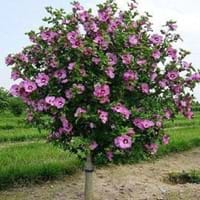Life Span
Perennial
Annual and Perennial
Type
Perennial
Deciduous Shrub, Ornamental Plants, Shrub
Origin
Eastern Europe
Not Available
Types
Not Available
Diana, Oiseau Bleu, Hamabo, Red Heart, Notwoodone, William R. Smith, Meehani, Woodbridge
Number of Varieties
Not Available
Habitat
Terrestrial
gardens
USDA Hardiness Zone
4-9
5-9
Sunset Zone
1a, 1b, 2a, 2b, 3a, 3b, 4, 5, 6, 7, 8, 9, 10, 11, 12, 13, 14, 15, 16, 17, 18, 19, 20, 21, 22, 23, 24
2a, 2b, 3a, 3b, 4, 5, 6, 7, 8, 9, 10, 11, 12, 13, 14, 15, 16, 17, 18, 19, 20, 21, 22, 23, 24
Habit
Clump-Forming
Upright/Erect
Flower Color
Yellow, Lavender, Blue Violet
Dark Pink, Light Pink, Pink
Flower Color Modifier
Bicolor
Bicolor
Fruit Color
Not Available
Non Fruiting Plant
Leaf Color in Spring
Green, Sea Green
Green, Light Green, Yellow
Leaf Color in Summer
Green, Sea Green
Light Green
Leaf Color in Fall
Green, Sea Green
Yellow, Green, Pink
Leaf Color in Winter
Light Green
Gold, Tan
Leaf Shape
Lanceolate
Ovate and toothed
Plant Season
Spring, Summer
Spring, Summer, Fall, Winter
Sunlight
Full Sun, Partial Sun
Full Sun, Partial Sun
Growth Rate
Medium
Medium
Type of Soil
Loam, Sand
Loam
The pH of Soil
Neutral
Neutral
Soil Drainage
Well drained
Well drained
Bloom Time
Spring, Late Spring, Early Summer
Early Summer, Summer, Late Summer, Early Fall, Fall, Indeterminate
Tolerances
Drought
Drought, Variety of soil types
Where to Plant?
Ground
Ground, Pot
How to Plant?
By dividing rhizomes, tubers, Seedlings
Stem Cutting, Tip cutting, Vegetative Reproduction
Plant Maintenance
Medium
Medium
Watering Requirements
Average Water Needs, Do Not over Water
It cannot sustain wet-feet, Keep the Soil well drained, Requires watering in the growing season, Water Deeply, Water frequently while growing, Water more in summer, Water when soil is dry
In Summer
Lots of watering
Lots of watering
In Spring
Moderate
Moderate
In Winter
Average Water
Average Water
Soil Type
Loam, Sand
Loam
Soil Drainage Capacity
Well drained
Well drained
Sun Exposure
Full Sun, Partial Sun
Full Sun, Partial Sun
Pruning
Remove damaged leaves, Remove dead branches, Remove dead leaves
A hard prune may be necessary if the plant becomes woody, Cut leaves after fall, Cut or pinch the stems, Pinch or prune as they grow to promote branching and bushiness, Prune for shortening long shoots, Prune in early summer, Remove deadheads
Fertilizers
All-Purpose Liquid Fertilizer
Apply 10-10-10 amount, Balanced liquid fertilizer, Do not fertilize new plants until at least a month, Use a low phosphate fertilizer to improve the quality of the blooms
Pests and Diseases
Red blotch
Aphids, Mealybugs, Red spider mite, Scale, Thripes, Whiteflies
Plant Tolerance
Drought
Drought, Variety of soil types
Flower Petal Number
Single
Single
Foliage Texture
Coarse
Medium
Foliage Sheen
Matte
Glossy
Attracts
Hummingbirds
Bees, Butterflies, Hummingbirds
Allergy
Skin irritation
no allergic reactions
Aesthetic Uses
Showy Purposes
Beautification, Borders, Landscape Designing
Beauty Benefits
Not Available
Hair Conditioner, Not Available, Prevents greying of hair, Prevents Premature Baldness, Promotes Healthy Hair, Promotes healthy skin, Speed hair growth
Environmental Uses
Air purification
Air purification
Medicinal Uses
No Medicinal Use
anti-inflammatory, Diuretic, Hair Loss, High blood pressure, Vitamin C
Part of Plant Used
Not Available
Flowers, Leaf Stalks, Leaves
Other Uses
Used as Ornamental plant
Showy Purposes, Used as Ornamental plant, Used for fragrance
Used As Indoor Plant
No
No
Used As Outdoor Plant
Yes
Yes
Garden Design
Alpine, Edging, Mixed Border, Rock Garden, Wall
Container, Foundation, Houseplant, Mixed Border, Tropical
Botanical Name
IRIS pumila
Hibiscus syriacus
Common Name
Dwarf Iris
Syrian ketmia, Rose mallow, St Joseph's rod, Shrub Althea
In Hindi
Dwarf Iris
Rose of Sharon Hibiscus
In German
Zwergiris
Rose von Sharon Hibiscus
In French
Dwarf Iris
Rose de Sharon Hibiscus
In Spanish
Enano Iris
Rosa de Siria Hibiscus
In Greek
νάνος Ίρις
Rose της Sharon Hibiscus
In Portuguese
Dwarf Iris
Rosa de Sharon Hibiscus
In Polish
Dwarf Iris
Rose of Sharon Hibiscus
In Latin
Iris Dwarf
Rose of Sharon Hibiscus
Phylum
Magnoliophyta
Magnoliophyta
Class
Liliopsida
Magnoliopsida
Family
Iridaceae
Malvaceae
Clade
Angiosperms, Monocots
Angiosperms, Eudicots, Rosids
Subfamily
Iridoideae
Malvoideae
Number of Species
Not Available
Not Available
Importance of Dwarf Iris and Rose of Sharon Hibiscus
Want to have the most appropriate plant for your garden? You might want to know the importance of Dwarf Iris and Rose of Sharon Hibiscus. Basically, these two plants vary in many aspects. Compare Dwarf Iris and Rose of Sharon Hibiscus as they differ in many characteristics such as their life, care, benefits, facts, etc. Every gardener must at least have the slightest clue about the plants he wants to plant in his garden. Compare their benefits, which differ in many ways like facts and uses. The medicinal use of Dwarf Iris is No Medicinal Use whereas of Rose of Sharon Hibiscus is anti-inflammatory, Diuretic, Hair Loss, High blood pressure and Vitamin C. Dwarf Iris has beauty benefits as follows: Not Available while Rose of Sharon Hibiscus has beauty benefits as follows: Not Available.
Compare Facts of Dwarf Iris vs Rose of Sharon Hibiscus
How to choose the best garden plant for your garden depending upon its facts? Here garden plant comparison will help you to solve this query. Compare the facts of Dwarf Iris vs Rose of Sharon Hibiscus and know which one to choose. As garden plants have benefits and other uses, allergy is also a major drawback of plants for some people. Allergic reactions of Dwarf Iris are Skin irritation whereas of Rose of Sharon Hibiscus have no allergic reactions respectively. Having a fruit bearing plant in your garden can be a plus point of your garden. Dwarf Iris has no showy fruits and Rose of Sharon Hibiscus has no showy fruits. Also Dwarf Iris is flowering and Rose of Sharon Hibiscus is not flowering . You can compare Dwarf Iris and Rose of Sharon Hibiscus facts and facts of other plants too.





